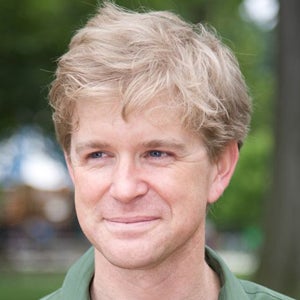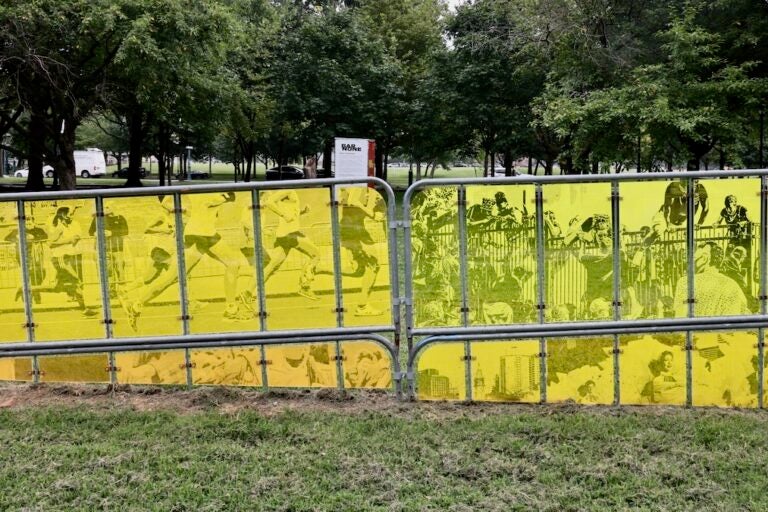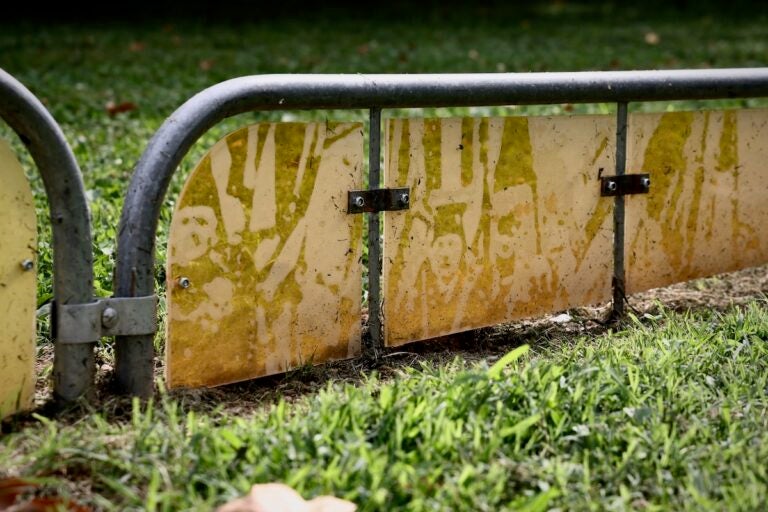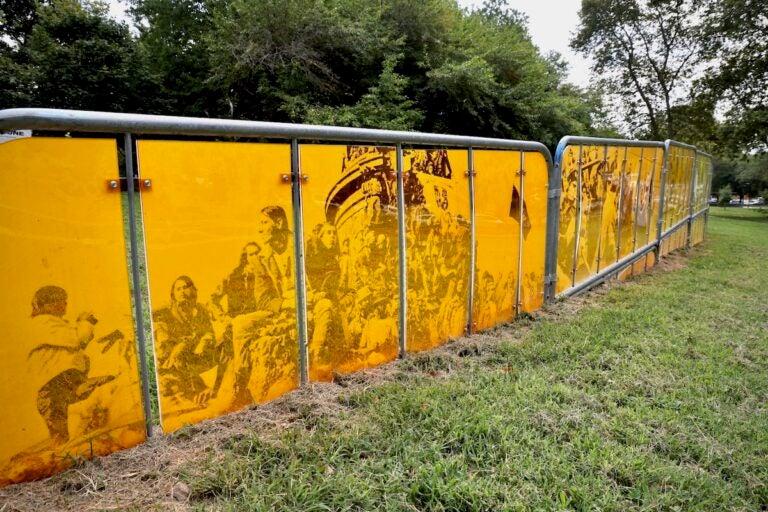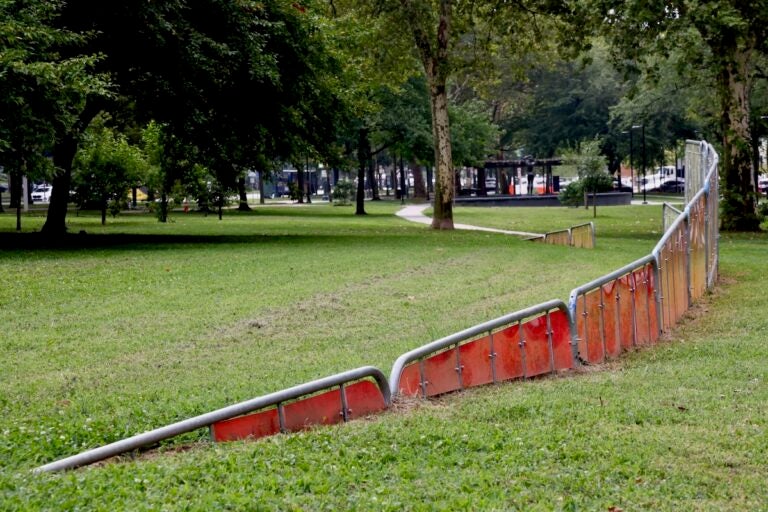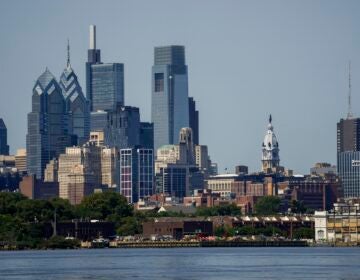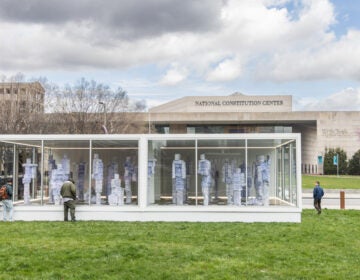Police barricades are transformed into protest art on the Parkway, highlighting Philadelphia’s history of activism
The Association for Public Art’s “Bar None” by Nicolo Gentile reflects on the history of the Parkway as a crucial site of public assembly.
From Philly and the Pa. suburbs to South Jersey and Delaware, what would you like WHYY News to cover? Let us know!
The Benjamin Franklin Parkway in Philadelphia now features the ghosts of protests past.
A 128-foot line of galvanized steel police barricades appears to be emerging out of the lawn of Maja Park at 22nd Street. Fixed to them are acrylic panels laser-engraved with archival images of actions that have taken place on the Parkway over the last 120 years.
They include a 1971 Vietnam War protest at the Washington Monument in Eakins Oval, former police commissioner Frank Rizzo in 1970 overseeing police in riot gear, and Black Lives Matter protesters in 2020 hopping a fence to escape tear gas.
Called “Bar None,” the piece of public art also features benign images of Parkway activities that also involve barricades: the 2023 Philadelphia Marathon, a Puerto Rican parade in the 1980s, and a 1933 Armistice Day flag procession.
“As a research-based artist, this opportunity got really exciting, the opportunity to dive deeply into the history of the Parkway as a site of collective assembly, protest, demonstration and celebration,” said artist Nicolo Gentile.
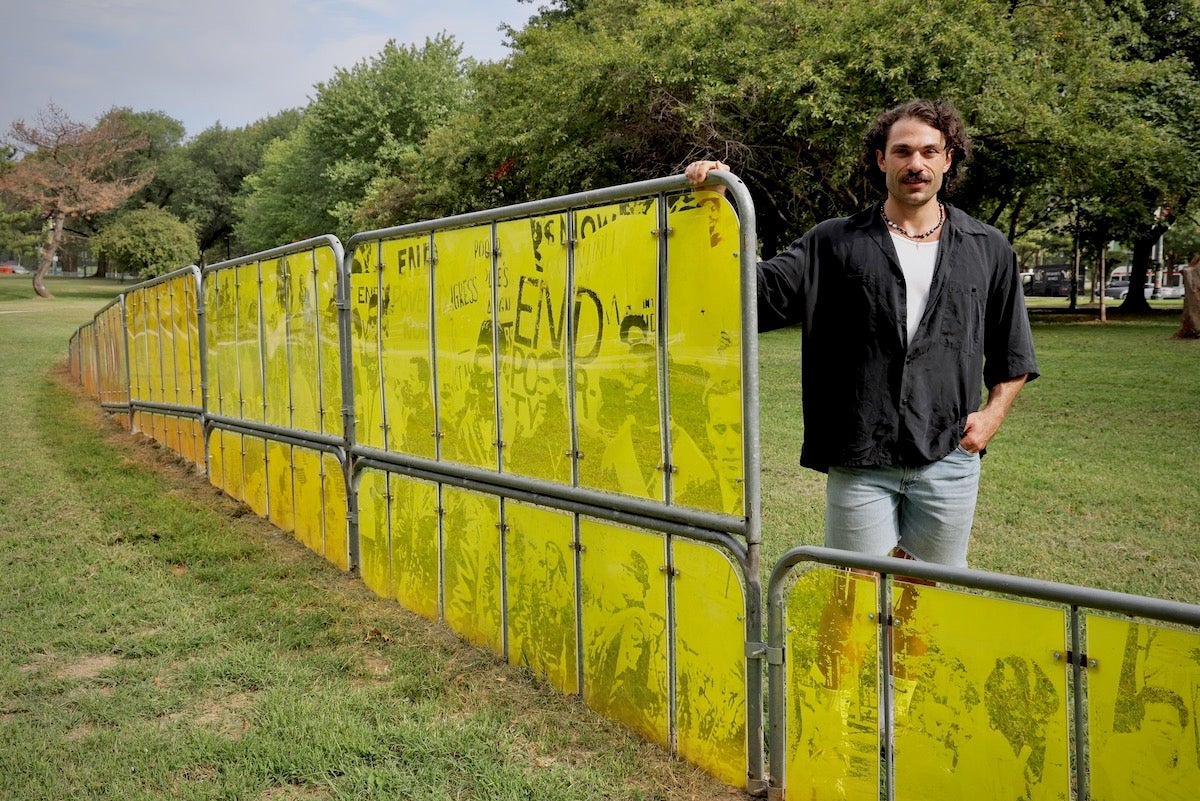
The Association for Public Art commissioned the installation of “Bar None” until the end of October. It is part of APA’s “Art on the Parkway” program, commissioning temporary sculptures by local artists and installing them in Maja Park.
The first installation of “Art on the Parkway” was last year’s “The Weight of Our Living” by Rachel Hsu, a partially buried disk of concrete embedded with smooth stones, intended to be walked upon with bare feet.
This year’s installation is more visible with a more provocative social and political message. The police barricades undulate across the field, rising out of the ground and diving back down, like the dorsal fin of a whale on the surface of the ocean.
“The undulating is a reflection on the rises and falls of political action, when and how people decide to come together to say something as a group,” Gentile said. “I think it’s fair to recognize that existing on a spectrum — a long time.”
Because the Parkway is often used for public events, barricades have become nearly ubiquitous to contain protests, redirect traffic and separate participants from spectators.
“Bar None” bends and manipulates barricades so as to appear functioning in ways never intended, said Charlotte Cohen, executive director of the Association for Public Art.
“It’s a transformation of what we think of as these protective structures: Those that keep us out, or keep us safe,” she said. “Certainly, they’re used to control. Above anything else, that’s really what the use has been. I think this transformation of that material is part of the real charm of the work, the ability to see them as something that can be a container for history.”
Barricades are designed to be moved, but “Bar None” is immobile, rooted to the ground with concrete footings. But ultimately, it is not built for the ages: It will be taken down at the end of October.
As a temporary sculpture, “Bar None” was conceived to speak to the country’s current social and political moment.
“I was interested in producing a work that is directly asking questions of our right to assemble,” Gentile said. “We see a lot of focus on what we understand as our rights under the Constitution starting to waver. I feel the intersectionality of our need to come together is often and pointedly attacked.”
Before “Bar None” comes down in October, Gentile will deliver a talk about the work on Sept. 18 at the nearby Parkway Central branch of the Free Library of Philadelphia. On Oct. 4, he will lead a workshop at the library on his collage techniques.

Get daily updates from WHYY News!
WHYY is your source for fact-based, in-depth journalism and information. As a nonprofit organization, we rely on financial support from readers like you. Please give today.


